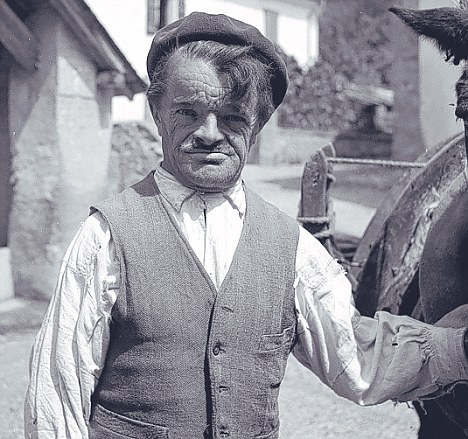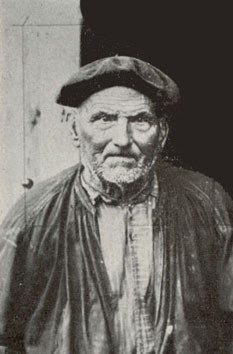peashooter85:Europe’s Forgotten Untouchables — The CagotsIt’s a terrible fact that throughout histor
peashooter85:Europe’s Forgotten Untouchables — The CagotsIt’s a terrible fact that throughout history prejudice, descriminiation, and ostracism has been a common facet of the human condition. Even in ancient times, peoples tended to think of their own societies as being the most civilized on Earth while all other peoples were mere barbarians. Prejudice and discrimination based on skin color, religion, and ethnicity is something that is common in almost every society and culture, and is a problem that plagues humanity to this day. However, discrimination against people in a society who share the same race, ethnicity religion, and culture has occurred a number times. Such people are ostracized, denigrated, and forced into a minority underclass for nebulous reasons even though they are no different from everyone else in that society. Often, these people are regarded as so low in society that they are considered filth, and the mere act of touching one of them could make a person unclean, requiring the person to undergo ritual purification. Perhaps the most well known of this phenomena are the Dalit, people on the very bottom of the ancient Indian caste system who are known as “untouchables”. For centuries the Dalit were forced by religious and secular law to only work in certain undesirable vocations, forced to live in segregated communities, forced to endure terrible poverty, and were absolutely forbidden from rising above their caste. Even though the caste system in India has long been abolished, the Dalit still face terrible discrimination, and the Dalit of modern India are among the most impoverished and downtrodden peoples of the world. In Japan a similar caste exists called the Burakumin, a class of people who to this day live in the poorest communities of Japan. Recently, the Youtube channel “Rare Earth” did an excellent video on the Burakumin. I highly suggest you watch it before reading further. It can be found here. In Yemen there exists a group left over from a long abolished caste system called the Al-Akdham, a stigmatized people who share much in common with the Dalit and Burakumin. The Western world is no different. Even though in European based cultures caste systems are not nearly as ingrained as in other societies, there was one a oppressed group of untouchables known as the Cagots.The Cagots primarily resided in Northern Spain, Southern France, and Northwestern France, and are first documented in the historical record around 1000 AD. Like the other groups mentioned in the previous paragraph, the Cagots were a group of people that were considered so low in society that they were literally untouchable, as it was believed that they spread disease and filth. This was all in spite of the fact that they shared the same ethnicity, race, religion, language, and culture as the society they lived in. As a result, the Cagots were separated from the rest of society and forced to live in special ghettos called “Cagoteries”. Because of their “uncleanliness”, they were forbidden from touching non-Cagots. They were also forbidden from touching food in markets, from preparing or serving food for public consumption, eating with non-Cagots, from bathing in public baths and using public lavatories. Markets would be reserved on certain days so that Cagots could shop without being in contact with other people. Churches had special entrances for Cagots, and basins of holy water were set up for Cagot use only. A special roped off section of the church was reserved for the Cagots separate from the rest of the congregation. During Holy Communion the Eucharist and sacramental wine were served to the Cagots using large, long wooden spoons. They were even forbidden from burying their dead in public graveyards and cemeteries. The Cadots were often forced to announce their arrival when entering town, either by shaking a loud bell or rattle. They were also forced to wear certain conspicuous dress and often times wear a goose foot around their necks; based on the myth that they had webbed feet. As a result they were also forbidden for being barefoot which was how most peasants of the time walked. The Cagots were forced to work in only a few specific career fields such as ropemaking, making wine barrels, and coffins. Economically it was impossible for a Cagot to rise above his or her class, as was it impossible socially as Cagots were forbidden from marrying non-Cagots. If you were a Cagot living between the 11th and 19th century, you were inescapably bound to live a life of discrimination, ostracism, revilement, and poverty. It’s important to keep in mind that all of these rules and restrictions were not merely social norms, but in most localities had the force of law. Breaking the law could result in brutal punishment. In the early 18th century a Cagot in Landes was seen collecting water from a public fountain. He was punished by having his hand cut off and nailed to the local church door. In 1741 a Cagot from Moumour was discovered farming a plot of land and as a result had his feet pierced with red hot iron spikes. Cagots were so hated that when Pope Leo X issued a Papal Bull ordering that Cagots should be treated like normal human beings, the Bull was completely ignored, even by loyal church officials.Change came for the Cagots with the French Revolution. Many Cagots were ardent supporters of the French Revolution because they were the most oppressed by the French society and government, and of course they had nothing left to lose. During the Revolution the Cagots often stormed government buildings and records offices to destroy family records and birth certificates which identified them as Cagots. Finally, French Emperor Napoleon Bonaparte officially abolished all legal and social discrimination against the Cagots. Of course, just because the government said it was illegal, didn’t mean that the discrimination stopped entirely. In many parts of France and Spain, de facto discrimination continued up to the late 19th century. However, the 19th century signaled the end of the Cagot class as public attitudes changed and eventually they integrated into society. By the early 20th century, Cagot prejudice was rare and focused in a few backwards localities. Today, the Cagot no longer exist as a defined people and their history is mostly forgotten..So now it’s time to ask the most important question of all; What did the Cagots do to deserve such treatment? Why were they hated so much? Incredibly, no one really has a definitive answer. There are many theories proposed by historians; they were once religious heretics, they were descendants of Moors, they were descendants of Goth slaves, they were descendants of lepers, people believed they had certain physical features which made them inferior (none of which was true), that they once belonged to a fallen Medieval carpenters guild. The truth of the matter is that the reasons for the Cagots’ status in society is completely unknown and forgotten. Yes, the society that condemned and oppressed the Cagots for almost 1,000 years had long ago forgotten why they were condemning and oppressing them. For centuries, the only reason why the Cagots were so reviled was… because they were Cagots ¯\_(ツ)_/¯ No other explanation was necessary or desired. -- source link
Tumblr Blog : peashooter85.tumblr.com



